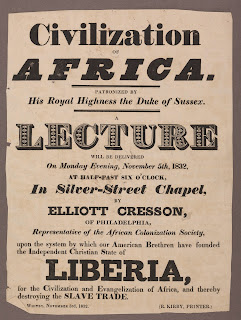We have recently undertaken work to make available and promote some of the more unusual items in our collections, and to record the context and stories behind them (for example, our earlier blog post about a Scarborough siege coin).
As part of this process we discovered that we hold an election ticket or medal, issued by William Wilberforce during the 1807 general election. Wilberforce was a sitting MP for Yorkshire, and was one of three candidates seeking two seats. The other candidates were Charles William Fitzwilliam (Viscount Milton), and the other sitting MP, Henry Lascelles. One of the big issues of the time was slavery, with Wilberforce leading the abolitionist movement in Parliament. Lascelles on the other hand, was a slave-owner from an aristocratic family, and had vast wealth based on plantations in the Caribbean.
The Borthwick Institute here at York holds the Lascelles Slavery Archive, a wonderful resource documenting the business interests of the Lascelles family, and shedding light on slavery in the Caribbean and life on the plantations.
 |
| William Wilberforce medal |
The medal in our collection has a hole in the top, allowing it to be hung around the neck of Wilberforce supporters. Wilberforce was returned with the most votes, with Milton a close second. Just a few months before the election, the slave trade had been outlawed by the Slave Trade Act of 1807, but it wasn't until 1833, and the Slavery Abolition Act, that slavery itself was finally outlawed in British law.
 |
| Sidgwick's Best Virginia |
The plate probably dates from the 18th century and is evidence of the lucrative trade in tobacco and other goods from British colonies, built on the exploitation of slave labour. By the mid-1800 they were around 300,000 slaves in Virginia working large, labour intensive tobacco plantations, which were the backbone of Virginia's economy. We have a number of books in our collection where you can find out more information about the slave trade in Virginia.
 |
| Civilization of Africa lecture |
The handbill is part of a collection printed in Whitby in the 1820s and 1830s, which provides an insight into the public life of the town at the time. All the items are part of the Raymond Burton Yorkshire collection and can be viewed in the Borthwick Institute for Archives.
All images taken by Paul Shields. Copyright is University of York